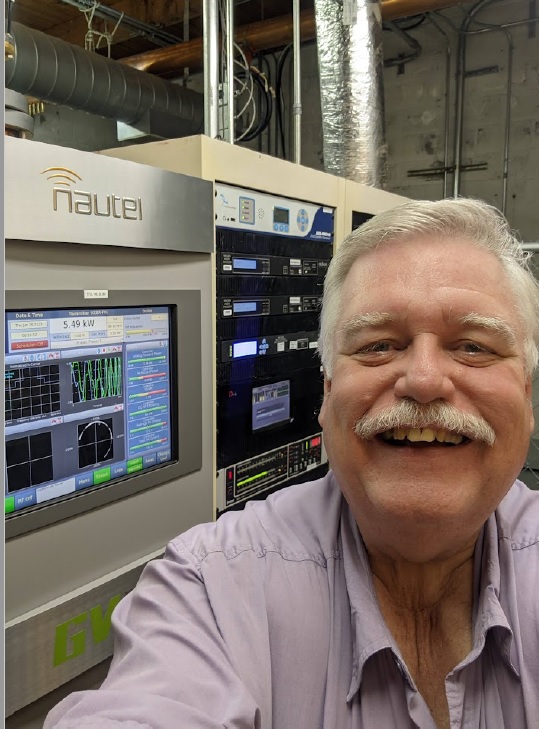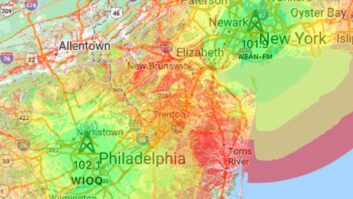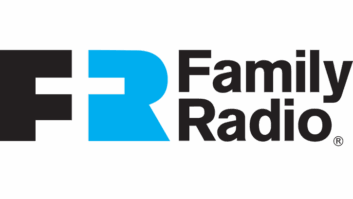We spotted a post on LinkedIn recently by David Shantz, director of engineering for Family Radio, reporting that the organization had just flipped on its first HD Radio signal. We emailed him for more info.
Radio World: What station is it, and what is the business rationale for doing so now?
David Shantz: It is KEBR(FM) in Sacramento, Calif. on 88.1.

We strive to provide the most enjoyable listening experience for our listeners. I find an HD signal more enjoyable to listen to than an analog; I’d choose an HD signal when I have a choice, and I expect it to be the same with our listeners.
An HD signal is more open and less fatiguing to listen to than analog. The highs are crisper, and you can hear the lows. There are elements of a song that I only hear on HD.
We would hope that HD listeners would listen longer to the signal because it does not have the artifacts of analog — pre-emphasis processing, 15 kHz bandwidth. By listening longer, they will become supporters.
RW: How many stations does Family Radio have in total?
Shantz: There are 78 signals, including 44 stations and 34 translators. The ministry has been around for over 60 years. We have signals across the country.
RW: What are the technical parameters of KEBR?
Shantz: It is a Class B FM with an ERP of 8.4 kW, located between Sacramento and Stockton. The HD power level is –10 dBc. The programming is delivered by Ku band satellite, XDS-PRO1Q satellite receiver, Omnia.9 audio processor, Nautel GV10 transmitter and Antenna Concepts ATI-4V antenna. The HAAT of the antenna is 303 meters.
RW: What technical changes needed to be made to turn on the digital?
Shantz: The plant was upgraded a few years ago, and when that was done, it was done with HD in mind. It has an oversized Nautel GV-10 transmitter. I updated the processing to a new Omnia.9 with the HD-1 signal path turned on. We added the Inovonics Justin 808 for time alignment and the Nautel Multicast. We upgraded the modulation monitor to the new Inovonics 551 HD Modulation Monitor.
RW: How is the coverage?
Shantz: I find the HD coverage very close to the analog range. I’m very happy with the coverage. If you are in the fringe area, the Inovonics Justin 808 keeps the alignment in sync, the fading between HD and analog is hard to notice unless you are listening to it.
RW: What plans, if any, are there for multicasting?
Shantz: We will team up with another ministry to put their programming on HD-2. My main push was to add HD-1 for minimal cost to provide the best listening experience to our listeners.
RW: What else should we know about the project?
Shantz: We are still working on the song and artist information and the album art. To me, that is a high priority. With better displays in vehicles now and the listener used to seeing so much more data on the streams, we need to provide that information on the screen. That is a key part of the listener’s experience. I know I find myself often looking at the display for information on what I’m listening to and I expect it to be there.
RW: And now you’re turned on another signal.
Shantz: The second Family Radio station to turn on HD Radio is WJFR in Jacksonville, Fla., which went to 100% power recently. Before I joined Family Radio the prior signal was damaged, and we needed to relocate it. This took some time. Rob Branch headed up the project. Family Radio engineer Tommy Jenkins worked with Broadcast Electronics on receiving and installing the STX-10 transmitter in the Family Radio rack. I’m grateful to have talented engineers on the Family Radio team.
RW: What plans do you have to add HD Radio to more of the Family Radio stations? Will you put it on translators too?
Shantz: We want to work with the two HDs we added. We want the listener to experience the song and artist working next. have no plans for other upgrades to HD on the calendar. Yet I will always look for situations where HD is cost-effective and enhances the listener experience.
There are several advantages to feeding a translator with an HD signal. If any of our signals would benefit, I would pursue that. My push for now was to bring HD to Family Radio and our listeners. Doing this has opened opportunities like HD-fed translators in the future.







